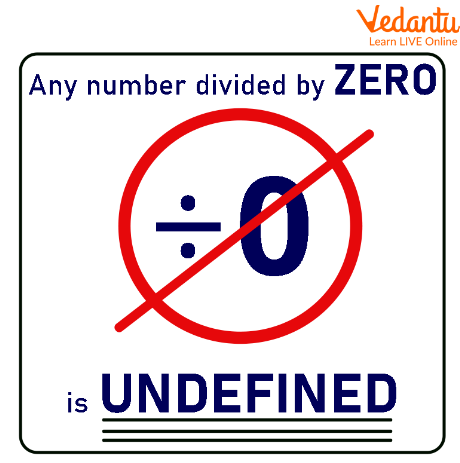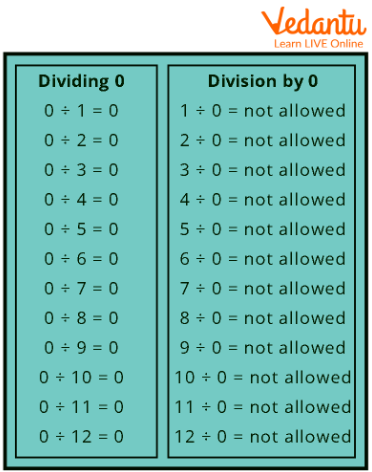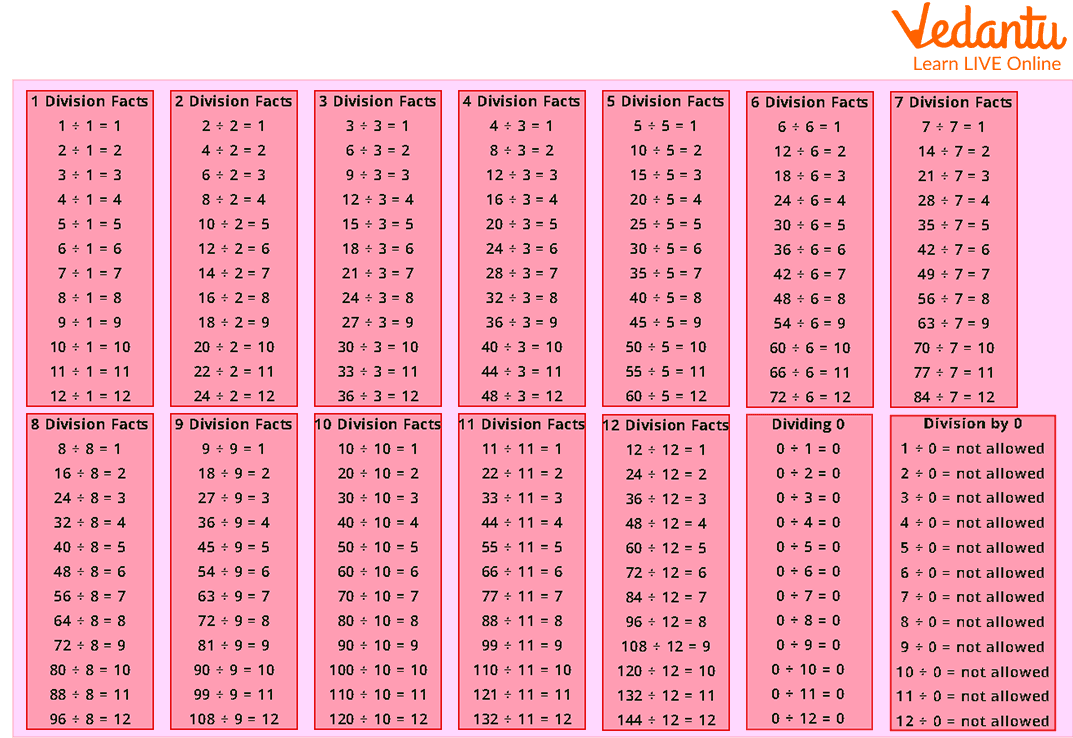




How Does Division Work? Simple Rules and Real-Life Uses
One of the four fundamental arithmetic operations, or how numbers are combined to create new numbers, is division. The other operations are multiplication, addition, and subtraction. At a fundamental level, counting the instances in which one number is included within another is one interpretation of the division of two natural numbers.
Division facts are number phrases that relate to knowing the times tables.
What is Division Fact?
1. If the dividend is "zero," any number used as a divisor will result in a "zero" quotient.
2. Any dividend will have a quotient equal to itself if the divisor is "1".
3. The dividend is always equal to the product of the divisor and the quotient added to the remainder.
Dividend = (Divisor Quotient) + Remainder.
Division Facts for Multiplication
A fact involving multiplication is the result of two distinct integers. Additionally, the product is unaffected by the arrangement of the numbers. For instance, \[3 \times 2 = 6{\rm { \;and\; }} 2 \times 3 = 6\] .
These days, division facts are frequently taught with multiplication facts as fact families. For instance, a student learning the numbers 2, 3, and 6 would be aware that\[3 \times 2 = 6{\rm{ and }}2 \times 3 = 6\], and that \[\frac{6}{2} = 3{\rm { and }} \frac{6}{3} = 2\] . No matter how multiplication facts are taught, they can only be learnt via practice. Fortunately, there are a lot of tools available to assist your child master multiplication.
Division Facts for Zero
Any number used as a divisor will result in a "zero" quotient if the dividend is "zero." A fraction with zero as the denominator is created when a positive or negative number is divided by zero. To express zero divided by a negative or positive value, a fraction with zero as the numerator and the finite amount as the denominator is employed. Divided by it, zero equals zero.

Division Fact

Division Facts for Zero (Tabular Form)
Division Facts Examples Image:

Division Facts
Solved Examples(Division Facts with Answers):
Example 1: What is \[32 \div 8?\]
Ans: We know that \[8 \times 4 = 32\]
Thus, \[32 \div 8 = 4\]
Answer is 4.
Example 2: What is \[40 \div 10\] ?
Ans: As we know \[10 \times 4 = 40\] ;
Therefore \[40 \div 10 = 4\]
Answer will be 4.
Example 3: If Shrilly had 49 chocolates and she wants to distribute them in her friends group. There are a total 7 members in the Shrilly group. Help her out in distributing the chocolate so that every member gets an equal number of chocolates.
Ans: Total Number of chocolates Shrilly had = 49
Number of friends = 7
For distributing them \[49 \div 7\] chocolates will be the precise way.
As we know, \[7 \times 7 = 49\].
Thus, \[49 \div 7 = 7\]
Therefore, each member will get 7 chocolates.
Conclusion
One of the four fundamental arithmetic operations is division, which is the process of combining two numbers to create a new number. The remaining operations are multiplication, addition, and subtraction.
FAQs on Essential Facts About Division
1. What is a division fact in mathematics?
A division fact is a fundamental division equation that shows the relationship between three numbers. It demonstrates how a dividend is divided by a divisor to result in a quotient. For instance, the equation 36 ÷ 9 = 4 is a division fact. These facts are directly linked to multiplication facts (e.g., 9 × 4 = 36), which helps in learning and verifying them.
2. What are the four main parts of a division problem?
Every division problem consists of four key components that define the operation:
- Dividend: The number that is being divided.
- Divisor: The number by which the dividend is being divided.
- Quotient: The result or the answer obtained after the division.
- Remainder: The value that is left over when the dividend cannot be perfectly divided by the divisor.
3. What are the most important properties or rules of division?
Several key properties govern how division works:
- Dividing by 1: Any number divided by 1 results in the number itself (e.g., 45 ÷ 1 = 45).
- Dividing by Itself: Any non-zero number divided by itself is always 1 (e.g., 17 ÷ 17 = 1).
- Dividing Zero: Zero divided by any non-zero number always results in zero (e.g., 0 ÷ 8 = 0).
- Dividing by Zero: It is not possible to divide any number by zero; this operation is considered undefined in mathematics.
4. How are division and multiplication related to each other?
Division and multiplication are inverse operations, which means they are opposites and can undo each other. For every division fact, there is at least one corresponding multiplication fact. For example, if we know that 56 ÷ 7 = 8, we also know the related multiplication fact is 7 × 8 = 56. This inverse relationship is the most common way to check if a division answer is correct.
5. How can you use multiplication to check if a division answer is correct?
To verify the accuracy of a division problem, you can use the following formula which relies on multiplication: (Quotient × Divisor) + Remainder = Dividend. For instance, if you calculate that 23 ÷ 4 is 5 with a remainder of 3, you can check it. Multiply the quotient (5) by the divisor (4) to get 20. Then, add the remainder (3). Since (5 × 4) + 3 = 23, which is the original dividend, the answer is correct.
6. Why is it impossible to divide a number by zero?
Dividing by zero is undefined because it represents a question that has no logical answer. Division asks, "how many times can the divisor fit into the dividend?" If you try to see how many times zero fits into a number like 10 (10 ÷ 0), you could subtract zero an infinite number of times without ever reaching the end. Since there's no single, concrete answer, the operation is mathematically impossible.
7. In a division problem, why must the remainder always be smaller than the divisor?
The remainder must always be smaller than the divisor because the remainder represents the amount that is 'left over' after forming the maximum possible number of equal groups. If the remainder were larger than or equal to the divisor, it would mean that another complete group could have been formed, and the division would be incomplete. Therefore, a remainder smaller than the divisor is a fundamental rule for a correct division.
8. How do essential division facts help in solving real-world problems?
Essential division facts are crucial for solving everyday problems that involve fair sharing or equal grouping. Understanding division helps you to:
- Split a restaurant bill of ₹1200 equally among 6 friends (1200 ÷ 6).
- Calculate how many boxes are needed to pack 100 books if each box holds 20 books (100 ÷ 20).
- Determine how many teams of 5 can be made from a class of 30 students (30 ÷ 5).















